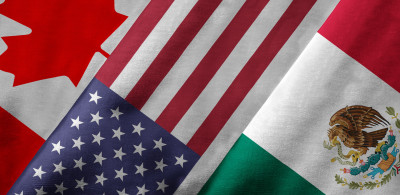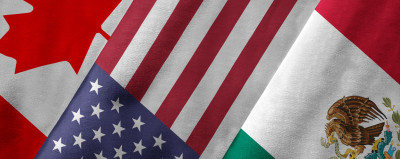This article is a continuation of two previous articles published by W2C:
CUSMA TO START ON JULY 1
On April 24, 2020, the U.S. government announced that the United States – Canada – Mexico Agreement (USMCA), also known in Canada as CUSMA (Canada – U.S. – Mexico Agreement) and T-MEC (Tratado Mexico – Estados Unidos – Canada) in Mexico, will replace the existing North American Free Trade Agreement (NAFTA) starting July 1, 2020. Earlier in April, Canada and Mexico had previously announced that they were ready to implement the new CUSMA.
This leaves very little time for importers and exporters, who currently rely on NAFTA, to prepare for the upcoming changes under CUSMA. As of writing this article, the July 1 date is less than 60 days away. Even under normal circumstances, this would be a very short time for companies to adjust their processes and procurement practices to the changes in the new agreement. Under COVID-19, the abilities of many businesses to migrate to the new requirements of CUSMA will undoubtedly be stretched to the limit. Nevertheless, it appears the three countries still want to go forward with the July 1 start date.
While the final text of the agreement, its side letters and the summary of protocol of amendment are available (click here for U.S. versions), it is only within the last few days that the three governments have begun to publish guidance documents of the regulations needed to implement CUSMA, all of which must be done by July 1.
U.S. Customs and Border Protection (CBP) recently announced the USMCA Interim Implementation Instructions via Cargo System Messaging Service (CSMS # 42429822). CBP has also published Frequently Asked Questions and other relevant information on its USMCA webpage.
The interim instructions provided some initial guidance regarding rules of origin, regional value content (RVC) calculation methods, de minimis rules, transshipment, eligibility for textiles and apparel, how to make preference claims as well as certification and recordkeeping requirements.
Earlier in April, the Canada Border Services Agency (CBSA) published the following Customs Notices:
- 20 – 13 Canada-United States-Mexico Agreement (CUSMA): Amendment to the Definition of “Specially Defined Mixtures” in the Customs Tariff, Chapter 16, Supplementary Note 1
- 20 – 14 Implementation of the Canada – United States – Mexico Agreement (CUSMA)
- 20 – 15 Increase to the Low Value Shipment (LVS) Threshold for Goods Imported into Canada
On May 2, the CBSA announced another Customs Notice related to CUSMA:
- 20 – 18 Implementation of the Canada-United States-Mexico Agreement (CUSMA) De Minimis Threshold with Respect to Customs Duties and Taxes for Courier Imports
In Canada, regulatory amendments and new regulations made under the Customs Act and the Customs Tariff Act, as a result of CUSMA’s implementation, are still pending and have not yet been announced as of writing this article.
Likewise, the U.S. is still developing the USMCA Uniform Regulations, USMCA Domestic Regulations and Appendices to incorporate in Title 19, Code of Federal Regulations 182 (19 CFR §182). In addition, the inclusion of USMCA rules of origin in General Note 11 of the Harmonized Tariff Schedule of the United States (HTSUS) still needs to be done.
CUSMA anticipates that vehicle manufacturers will need some time to bring their supply chains in line with the CUSMA rules of origin for automotive goods. Accordingly, CUSMA provides a transition period that includes annually increasing regional value content (RVC) and labor value content (LVC) minimums. Vehicle producers who want to use a different transition plan than the one specified in CUSMA for moving into compliance with the new rules of origin for automotive goods must submit a petition to the U.S. Trade Representative (USTR). To be considered eligible, the producer must submit a petition with a “draft” staging plan no later than July 1, 2020 and a “final” staging plan no later than August 31, 2020.
Until June 30, the current NAFTA and its requirements remain in effect. On July 1, CUSMA enters into force and the NAFTA preference can only be claimed on goods imported and exported on or before June 30, 2020.
WHAT DOES THIS ALL MEAN IN THE SHORT TERM?
Starting July 1, producers, exporters and importers can no longer follow the NAFTA rules; they must follow the CUSMA rules of origin in order to qualify their goods for the duty-free preference into Canada, the U.S. or Mexico for their goods produced in North America.
On July 1, NAFTA certificates of origin will no longer be accepted. Instead, you must certify originating goods using the CUSMA certificate of origin. As stated in the previous paragraph, the new certification must be based on a determination of origin that is based on the CUSMA rules of origin – and not on the NAFTA rules.
Moreover, we recommend that Canadian importers contact their U.S. and Mexican suppliers to assess their level of readiness for CUSMA. Mexican and U.S. producers that export to Canada will need to re-qualify the originating status of their goods based on the CUSMA rules. Starting July 1, your suppliers will need to provide new certificates of origin (blanket or single shipment) based on the CUSMA proof of origin and certification requirements if you wish to continue benefitting from the free trade preference.
For Canadian producers that export to the U.S. and Mexico, you will need to re-qualify your goods under the CUSMA rules and certify them (blanket or single shipment) based on the CUSMA proof of origin and certification requirements.
Unlike NAFTA, CUSMA does not impose a specific certificate of origin form. As such, there is every reason to believe that the CBSA Form B232 and CBP Form 434 would not be acceptable for claiming the CUSMA preference, since the old NAFTA forms do not comply with the minimum data elements prescribed in Annex 5-A of Chapter 5 of CUSMA. We recommend that you do not use the old NAFTA forms to support CUSMA claim for goods imported or exported between the partner countries as of July 1, 2020. Instead, you should use a CUSMA origin certification model that meets the standards of the new agreement.
Meanwhile, a claim for preferential treatment under CUSMA must contain nine minimum data elements, which are set out in the CUSMA Annex 5-A (Minimum Date Elements). The data elements must indicate that the good, for which a CUSMA preferential treatment is claimed, does in fact originate and does meet the CUSMA Chapter 5 requirements. This information may be provided on a commercial invoice or any other document. Various customs brokers, including W2C, will make CUSMA certificate of origin templates available to the trading community. The information must describe the originating good in enough detail to allow for its identification and meet the requirements set out in forthcoming CUSMA regulations. For more information, see Chapter 5 Origin Procedures, Article 5.2 and Annex 5-A.
North American businesses cannot automatically assume that products, which previously qualified as originating goods under NAFTA, will continue to qualify under CUSMA, although most will. Alternatively, certain products that did not previously qualify as originating goods under NAFTA may now qualify under CUSMA. You must consult the new rules of origin and origin procedures outlined in CUSMA and subject your product to an origin analysis based on the new rules.
Note: In addition to the official CUSMA text, rules of origin are further outlined and interpreted in regulations that are not yet available, but are supposed to be published by the three countries no later than July 1. For example, the NAFTA “preference override” rules – for goods produced in more than one NAFTA country – were provided for in regulatory documents and not in the official NAFTA text. Similarly, the currently available CUSMA text does not refer to “preference override” rules. We can only assume that these will be addressed in the forthcoming CUSMA regulations. Therefore, if your previous origin determination and transaction scenario used the NAFTA “preference override” rules, we will not know if the “preference override” conditions remain unchanged until the new regulations are published.
Starting July 1, previously issued NAFTA origin rulings (i.e. Advance Rulings from CBSA and Binding Rulings from CBP) will no longer be valid. If the originating status of a product was based on a previously issued ruling from Customs, you will need to seek a new ruling based on CUSMA requirements. Similarly, basing your CUSMA origin determinations using existing NAFTA rulings published on CBP’s CROSS database will not constitute “Reasonable Care.”
Starting July 1, under the new De Minimis thresholds provided for in CUSMA, online shoppers will benefit from higher value thresholds for duty- and tax-free purchases when goods are shipped by mail or courier. For example, in Canada the current $20 CAD limit will be increased to $150 CAD exempt of customs duties and $40 CAD exempt of sales taxes. Online retailers who sell to consumers on a landed duty-paid basis will need to adjust their systems for the increased De Minimis thresholds in Canada and Mexico. There is no change to the De Minimis level in the U.S., which remains at $800 USD.
Starting July 1:
- The CBSA will increase its LVS (Low Value Shipment) thresholds to an estimated value for duty not exceeding $3,300 CAD, up from the current $2,500 CAD.
- Increased quotas of dairy, egg and poultry products from the U.S. will become available to Canadian importers under CUSMA. Global Affairs Canada is expected to soon publish its guidelines on TRQ allocations and import permit requirements.
- Post-importation claims will continue to be available under CUSMA for refunds of customs duties. In the U.S., however, Merchandise Processing Fees (MPF) will no longer be refunded following a post-importation CUSMA claim.
- CUSMA will reduce Tariff Preference Levels (TPLs) for certain textile products for U.S. imports from Canada and Mexico, while substantially increasing TPLs for U.S. exports to Canada of apparel and other finished textile goods.
- Canada will abolish the Mexico-US (MUST) preferential tariff treatment (TT code 12). Under CUSMA, Canada’s preferential tariff treatments are the United States Tariff (UST – TT code 10) and the Mexico Tariff (MXT – TT code 11). In the United States, the USMCA will also have a new Special Program Indicator (SPI). The SPI for USMCA will be ‘S’ and will be reflected in the Special Duty Rates column of the U.S. HTS Schedule. The existing SPI indicators for NAFTA (i.e. CA and MX) will only apply to eligible NAFTA originating goods imported into the U.S. on or before June 30, 2020.
W2C CAN HELP!
These will be challenging times as CUSMA comes into force less than two months from now amid the ongoing COVID-19 crisis. W2C is here to help you.
Please consult the W2C website for CUSMA online training events, which will be announced soon. If you would prefer an online training session that is customized to your company’s specific needs, please contact our training department at 1.514.368.2637 x112.
In addition to training, W2C offers several services to help you navigate the changes ahead:
- Determining tariff classification
- Conducting origin analysis based on any FTA (NAFTA, CUSMA, CETA, CPTPP, etc.)
- Support during Customs audits
- Requests for Advance Rulings (CBSA) or Binding Rulings (CBP)
- And much more
Contact W2C today to speak to one of our consultants.



